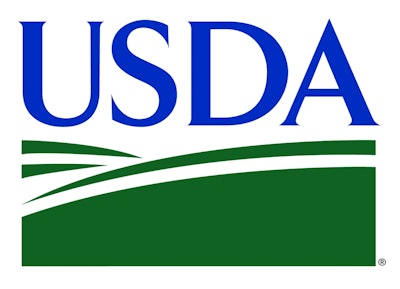
The U.S. Department of Agriculture's (USDA) Food Safety and Inspection Service (FSIS) has proposed new federal standards to reduce Salmonella and Campylobacter in ground chicken and turkey products as well as raw chicken breasts, legs and wings. Development of these new standards is a major step in FSIS' Salmonella action plan, launched in December 2013 to reduce Salmonella illnesses from meat and poultry products.
"Today, we are taking specific aim at making the poultry items that Americans most often purchase safer to eat," said Agriculture Secretary Vilsack. "This is a meaningful, targeted step that could prevent tens of thousands of illnesses each year."
"These new standards, as well as improved testing patterns, will have a major impact on public health," said USDA Deputy Under Secretary for Food Safety Al Almanza. "The proposed changes are another way we're working to meet the ever-changing food safety landscape and better protect Americans from foodborne illness."
"Getting more germs out of the chicken and turkey we eat is an important step in protecting people from foodborne illness," said Robert V. Tauxe, M.D., deputy director of the division of foodborne, waterborne and environmental diseases at the Centers for Disease Control and Prevention. "I look forward to seeing fewer Americans get sick as a result of these proposed changes."
A pathogen reduction performance standard is the measure that FSIS uses to assess the food safety performance of facilities that prepare meat and poultry products. By making the standards for ground poultry tougher to meet, ground poultry products nationwide will have less contamination and therefore result in fewer foodborne illnesses. FSIS implemented performance standards for whole chickens in 1996 but has since learned that Salmonella levels increase as chicken is further processed into parts. Poultry parts like breasts, wings and others represent 80 percent of the chicken available for Americans to purchase. By creating a standard for chicken parts, and by performing regulatory testing at a point closer to the final product, FSIS can greatly reduce consumer exposure to Salmonella and Campylobacter.
FSIS' science-based risk assessment estimates that implementation of these standards would lead to an average of 50,000 prevented illnesses annually. FSIS intends to evaluate comments for 60 days and announce final standards and an implementation date this spring. The federal register notice is available on FSIS' website at http://www.fsis.usda.gov/wps/portal/fsis/topics/regulations/federal-register/federal-register-notices.
For chicken parts, ground chicken, and ground turkey, FSIS is proposing a pathogen reduction performance standard designed to achieve at least a 30 percent reduction in illnesses from Salmonella. For chicken parts, ground chicken, and ground turkey, FSIS is proposing a pathogen reduction performance standard designed to reduce illness from Campylobacter by at least 19 and as much as 37 percent.
FSIS plans to use routine sampling throughout the year rather than infrequently sampling on consecutive days to assess whether establishments' processes are effectively addressing Salmonella and, where applicable, Campylobacter on poultry carcasses and other products derived from these carcasses.



















